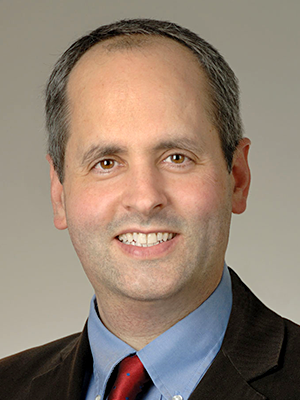The Molecular Mechanics of Eukaryotic Translation Initiation

- Jon Lorsch, PhD, Chief, Laboratory on the Mechanism and Regulation of Protein Synthesis
- Jagpreet Nanda, PhD, Staff Scientist
- Fujun Zhou, PhD, Research Fellow
- Shardul Kulkarni, PhD, Postdoctoral Intramural Research Training Award Fellow
- Kaitlynn M. Donahue, MS, Postbaccalaureate Intramural Research Training Award Fellow
The goal of our research group is to elucidate the molecular mechanisms underlying the initiation phase of protein synthesis in eukaryotic organisms. We use the yeast Saccharomyces cerevisiae as a model system and employ a range of approaches—from genetics to biochemistry to structural biology—in collaboration with Alan Hinnebusch's and Tom Dever’s labs and several other research groups around the world.
Eukaryotic translation initiation is a key control point in the regulation of gene expression. It begins when an initiator methionyl tRNA (Met-tRNAi) is loaded onto the small (40S) ribosomal subunit. Met-tRNAi binds to the 40S subunit as a ternary complex (TC) with the GTP–bound form of the initiation factor eIF2. Three other factors, eIF1, eIF1A, and eIF3, also bind to the 40S subunit and promote the loading of the TC. The resulting 43S preinitiation complex (PIC) is then loaded onto the 5′ end of an mRNA with the aid of eIF3 and the eIF4 group of factors: the RNA helicase eIF4A; the 5′ 7-methylguanosine cap-binding protein eIF4E; the scaffolding protein eIF4G; and the 40S subunit– and RNA–binding protein eIF4B. Both eIF4A and eIF4E bind to eIF4G and form the eIF4F complex. Once loaded onto the mRNA, the 43S PIC is thought to scan the mRNA in search of an AUG start codon. The process is ATP–dependent and likely requires several RNA helicases, including the DEAD–box protein Ded1p. Recognition of the start site begins with base pairing between the anticodon of tRNAi and the AUG codon. Base pairing then triggers downstream events that commit the PIC to continuing initiation from that point on the mRNA, events that include ejection of eIF1 from its binding site on the 40S subunit, movement of the C-terminal tail (CTT) of eIF1A, and release of phosphate from eIF2, which converts eIF2 to its GDP–bound state. In addition, the initiator tRNA moves from a position that is not fully engaged in the ribosomal P site [termed P(OUT)] to one that is [P(IN)], and the PIC as a whole converts from an open conformation that is conducive to scanning to a closed one that is not. At this stage, eIF2•GDP dissociates from the PIC, and eIF1A and a second GTPase factor, eIF5B, coordinate joining of the large ribosomal subunit to form the 80S initiation complex. In a process that appears to result in conformational reorganization of the complex, eIF5B hydrolyzes GTP and then dissociates along with eIF1A.
The molecular mechanics of eukaryotic translation initiation
We completed and submitted for publication a manuscript describing studies on the effect of temperature on translation of upstream open reading frames in S. cerevisiae. The paper describes our transcriptome-wide studies on the effects of temperature on translation in yeast. Our work showed that translation of a subset of upstream open reading frames (uORFs) is regulated by changes in temperature. In some cases, the alterations in translational efficiency of the uORFs affects translation of the downstream main ORF, leading to changes in gene expression. The paper has now been accepted for publication [Reference 2].
We also advanced our work aimed at leveraging our in vitro reconstituted yeast translation initiation system to measure the effects of initiation factors and other components on the rates of initiation in every yeast mRNA simultaneously. In this approach, using deep-sequencing methodology analogous to in vivo ribosome profiling, we use poly(dT)–purified total yeast mRNA and monitor 48S translation preinitiation complex (PIC) assembly on every mRNA at the same time. We use internal standard mRNAs to measure in absolute terms assembly rates instead of rates relative to the average of all mRNAs in the experiment. We are now optimizing the protocol and have already used it to study the effects of eIF4B and the DEAD box helicase Ded1 on mRNA recruitment to the PIC.
We made significant progress in our studies on the functions of the N-terminal tails (NTTs) of eIFs 1 and 5. We conducted a targeted alanine-scanning genetic analysis to determine which residues, when substituted with alanine, produce significant phenotypes such as lethality, slow growth, or an increase or decrease in the stringency of start codon recognition. We found several positions in both factors at which a change to alanine is lethal, and several others that increase or decrease the fidelity of start codon recognition. We also assessed the effects of viable mutations in both factors’ NTTs on the autoregulation of eIF1 translation, which depends on changes in recognition of the poor-context AUG start codon of eIF1 mRNA. We are now expressing and purifying variant proteins that produce the strongest phenotypes for in-depth mechanistic studies in the reconstituted translation initiation system in vitro.
Additional Funding
- Funding is provided via a Memorandum of Understanding (MOU) between NIGMS and NICHD.
Publications
- Sen ND, Gupta N, K Archer S, Preiss T, Lorsch JR, Hinnebusch AG. Functional interplay between DEAD-box RNA helicases Ded1 and Dbp1 in preinitiation complex attachment and scanning on structured mRNAs in vivo. Nucleic Acids Res 2019;47:8785-8806.
- Kulkarni SD, Zhou F, Sen ND, Zhang H, Hinnebusch AG, Lorsch JR. Temperature-dependent regulation of upstream open reading frame translation in S. cerevisiae. BMC Biol 2019;17:101.
Collaborators
- Thomas Dever, PhD, Section on Protein Biosynthesis, NICHD, Bethesda, MD
- Alan Hinnebusch, PhD, Section on Nutrient Control of Gene Expression, NICHD, Bethesda, MD
- Venkatraman Ramakrishnan, PhD, MRC Laboratory of Molecular Biology, Cambridge, United Kingdom
Contact
For more information, email jon.lorsch@nih.gov or visit https://irp.nih.gov/pi/jon-lorsch.


